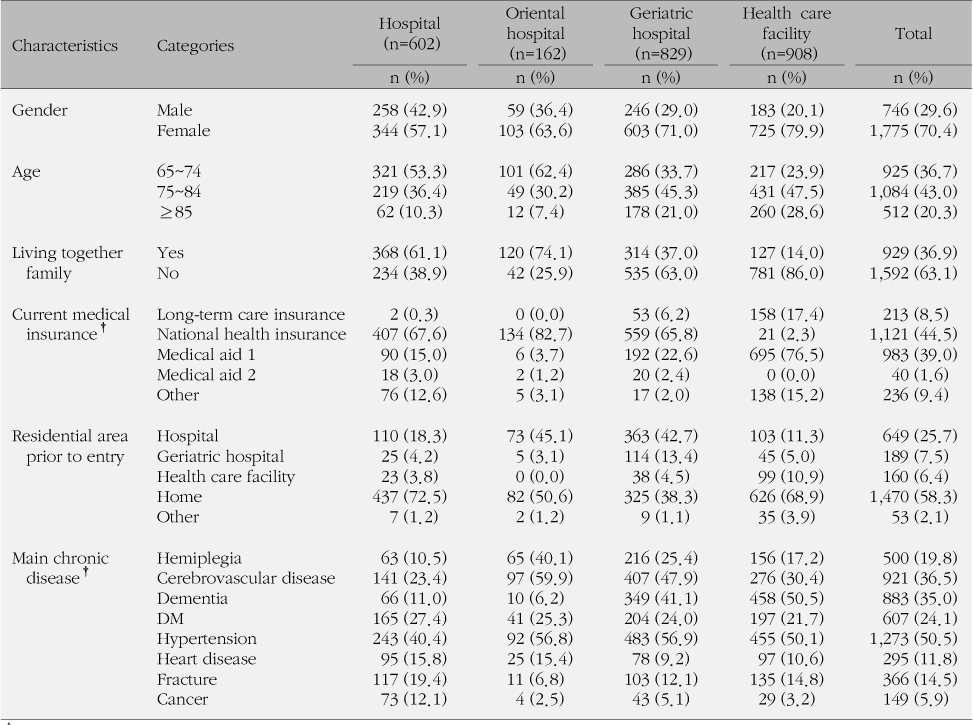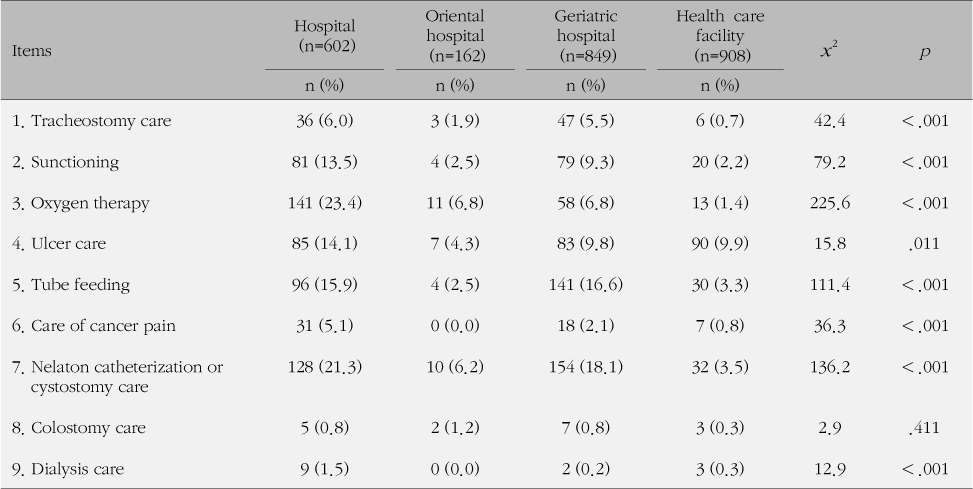References
1. Bliesmer MM, Smayling M, Kane RL, Shannon I. The relationship between nursing staffing levels and nursing home outcomes. J Aging Health 1998;10:351–371.
2. Carpenter I, Perry M, Challis D, Hope K. Identification of registered nursing care of residents in English nursing homes using the Minimum Data Set Resident Assessment Instrument(MDS/RAI) and Resource Utilization Groups version III (RUG-III). Age Ageing 2003;32:279–285.
3. Goold SD. Trust and the ethics of health care institutions. Hastings Cent Rep 2001;31(6):26–33.
4. Hambleton RK, Robin F, Xing D. Item response models for the analysis of educational and psychological test data. In : Tinsley H, Brown S, eds. Handbook of Applied Multi-variate Statistics and Mathematic Modeling San Diego, CA: Academic Press; 2000. p. 553–585.
5. Health Insurance Review & Assessment Service. Health insurance reimbursement fee Seoul: Aramedit; 2008.
7. June KJ, Lee JY, Yoon JL. Effects of case management using resident assessment instrument-home care(RAI-HC) in home health services for older people. J Korean Acad Nurs 2009;39(3):366–375.
8. Jung KH, Oh YH, Suk JE, Do SR, Kim CW, Lee YK, et al. The 2004 survey on the living profile and welfare service needs of older persons Seoul: Korea Institute for Health and Social Affairs; 2005.
9. Kim B, Hong S. A psychometric revision of the Asian values scale using the Rasch model. Meas Eval Couns Dev 2004;37:15–27.
10. Kim EK. Care time of elderly in long-term care facilities. J Korean Acad Nurs Adm 2003;9(3):353–366.
11. Kim SR. A study on the comparison of inpatients healthcare utilization between the Medicaid recipients and the insured Seoul: Yonsei University; 2000. Unpublished doctoral dissertation.
12. Korea Health Industry Development Institute. A study on the optimal supply of acute care beds and long-term care beds Seoul: Korea Health Industry Development Institute; 2008.
13. Korea National Statistical Office. Census of elderly population in Korea on 2008 year Seoul: Korea National Statistical Office; 2008.
14. Lee H, Lee HY, Lee J. Predictors of facility adaptation nursing home residents. J Korean Acad Nurs 2009;39(2):177–185.
15. Lee JY, Jang SM, Kim JH, Song SH, Yoon JY, Ju JS. A study on revision of health insurance payment system in geriatric hospital Seoul: Health Insurance Review & Assessment Service; 2007.
16. Lee SH. Multi-level analysis of factors related to quality of services in long-term care hospitals. J Korean Acad Nurs 2009;39(3):409–421.
17. Lee SH, Kim ER, Kim SM, Kim EK, Park SK, Oh JH. A study on the optimal supply of long-term care beds and specialized hospital beds Seoul: Korea Health Industry Development Institute; 2001.
18. Lee TW, Cho SY, Jang YK. Predictors of nursing service need for nursing homes residents. J Korean Acad Nurs 2009;39(1):95–106.
19. Miller EA, Weissert WG. Predicting elderly people's risk for nursing home placement, hospitalization, functional impairment and mortality: A comparative review and analysis. Med Care Res Rev 2000;57(3):259–297.
21. National Long-Term Care Planning Committee. A study on development of public long-term care system Seoul: Ministry of Health and Welfare; 2004.
22. Park JY, Kang IO, Kwon JH, Lee JS, Han EL. The 3rd pilot project evaluation of long-term care insurance Seoul: National Health Insurance Corporation; 2008.
23. Park JY, Kim KH, Ku MK, Han MH, Kim JY, Park JY, et al. A study on operation management in long-term care insurance system Seoul: National Health Insurance Corporation; 2004.
24. Phillips CD, Hawes C. Care provision in housing with supportive services: The importance of care type, individual characteristics, and care site. J Appl Gerontol 2005;24(1):55–67.
25. Roh YK, Sunwoo D, Yoon JR, Won JW, Lee DW, Lee DH, et al. A study on the role of long-term care facility and geriatric hospital Seoul: Ministry of Health and Welfare; 2010.
26. Sugai Y. Problems of integration of medical care and welfare service: Medical treatment under long-term insurance system. Psychogeriatrics 2006;6:139–144.
27. Sunwoo D. A study on health system construction of the elderly in aging society Seoul: Korea Institute for Health and Social Affairs; 2005.
28. van Campen C, van Gameren E. Eligibility for long-term care in the Netherlands: Development of a decision support system. Health Soc Care Community 2005;13(4):287–296.
29. Walker LO, Avant KC. Strategies for theory construction in nursing 3rd edth ed. Norwalk, CT: Appleton & Lange; 1994.
30. Yi JJ. Application of RUG-III for long-term care elderly patients Seoul: Yonsei University; 2000. Unpublished doctoral dissertation.




